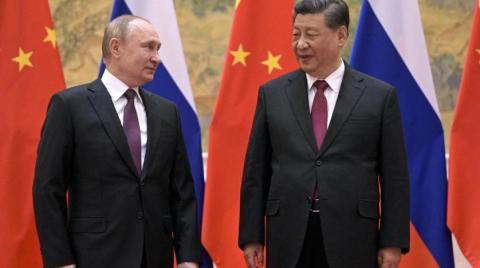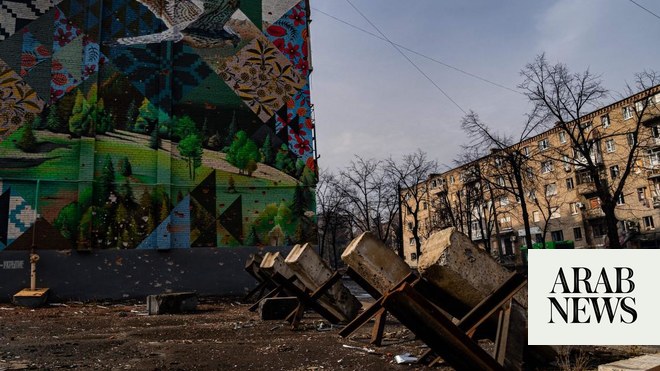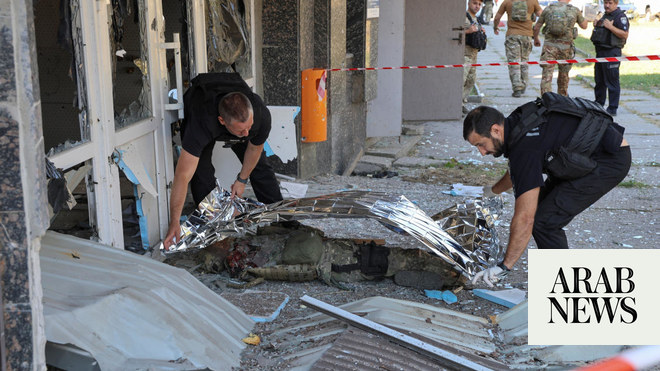
Secret discussions are under way between western allies over how to arm what they expect to be fierce Ukrainian resistance in the event of a Russian invasion that topples the Kyiv government.
Boris Johnson laid bare the case for such a move in a dramatic speech to the Munich security conference where he stated it was in the collective self-interests of the west for any Russian invasion to “fail and be seen to fail”.
He said that any invasion would lead to “a generation of bloodshed and misery” as Ukrainians would fight a fierce campaign to resist Russian forces. The message was underscored in a meeting between Johnson and the Ukrainian president, Volodymyr Zelenskiy, on the margins of the Munich conference where the two men predicted a fierce resistance to an invasion.
Similar discussions have been taking place in the US, where reports suggest the country’s national security adviser, Jake Sullivan, has told senators that the US is willing to arm a resistance and is not going to accept a Russian military victory that erases the principles of national self-determination.
At the crucial gathering in Munich, Johnson warned of a protracted battle after any invasion that Russia could not contain. He said: “A lightning war would be followed by a long and hideous period of reprisals and revenge and insurgency, and Russian parents would mourn the loss of young Russian soldiers, who in their way are every bit as innocent as the Ukrainians now bracing themselves for attack.
“If Ukraine is overrun by brute force, I fail to see how a country encompassing nearly a quarter of a million square miles – the biggest nation in Europe apart from Russia itself – could then be held down and subjugated for ever.”
It came as Zelenskiy demanded greater support from the west in the face of Russian aggression and the immediate imposition of tough sanctions on Russia, which leaders have vowed to impose should an invasion take place.
Ukraine’s military said two of its soldiers had been killed and four injured in enemy shelling on Saturday. It said there were 70 ceasefire violations as of 5pm local time. Civilians living close to the frontline with separatist-controlled territory experienced another day of intense shelling and bombardment. Ukraine’s foreign ministry said “armed Russian formations” had unleashed “provocative firing” all across the 155-mile (250km) frontline in the east of the country.
Meanwhile, there was growing suspicion that Russia was behind a series of seemingly coordinated “false flag” attacks, designed to give Vladimir Putin a pretext for a possible invasion. They included a car bomb on Friday evening outside the administration building in separatist-run Donetsk, an “attack” on a water station and a shell that landed just over the border in Russia’s Rostov region.
In Stanytsia Luhanska, a Ukrainian-controlled town on the outskirts of Luhansk, one of the Russia-backed separatist capitals, repeated thuds of incoming fire were audible on Saturday afternoon. Ukrainian officials in the town said there had been frequent bursts of incoming fire over the past few days.
The Ukrainian military took a group of journalists into Stanytsia Luhanska by helicopter and armoured vehicles on Saturday to help dispel what it said was a false Russian narrative that the Ukrainian army has been behind the recent rise in violence.
Ukraine’s military intelligence service said on Saturday the Kremlin was planning further destabilising operations, which could even see civilians killed, with an attack blamed on Kyiv.
The Ukrainian capital was also a possible target, it indicated. The service said that leaflets circulating in the Donetsk and Luhansk rebel republics, purporting to come from the Ukrainian army, were fakes. The flyers claimed Ukraine was preparing to attack.
Ukraine’s pro-western government said it was committed to dialogue and had no intention of launching an attack, or carrying out acts of sabotage in the Donbas region. Meanwhile, Nato said it was moving its personnel from Kyiv to the western city of Lviv. The British embassy relocated to Lviv on Saturday.
Until now, public discussion has been limited to the massive economic sanctions the west will impose on the Russian economy – and Putin’s circle. Steps have also been taken to protect Nato’s eastern flank, principally in Poland, Romania and the Baltics.
Joe Biden has ruled out American troops being sent to Ukraine since the US has no legal obligation to help Ukraine that extends to providing military assistance.
However, in his speech to the Munich security conference, Johnson made it clear that the west must stand by Ukraine by ensuring Russia was ultimately repelled. “If dialogue fails and if Russia chooses to use violence against an innocent and peaceful population in Ukraine, and to disregard the norms of civilised behaviour between states, and to disregard the charter of the United Nations, then we at this conference should be in no doubt that it is in our collective interest that Russia should ultimately fail and be seen to fail,” he said.
He presaged the possibility of further military help when he added: “We have to steel ourselves for the possibility of a protracted crisis, with Russia maintaining the pressure and searching for weaknesses over an extended period, and we must together refuse to be worn down.”
The degree of military assistance and the extent to which it is overt is still under discussion. Its scope in part depends on events on the ground. In public, Johnson has so far only said it is possible arms would be supplied, adding he would not rule it out. The west would not wish to be seen to be fomenting a futile and bloody resistance that was risking a wider conflict between Nato and Russia.
In the US, the Biden administration has approved about $650m (£480m) of military equipment to Kyiv in the past year, and more recently, it authorised a $200m package to Ukraine that included Javelin anti-tank missiles, other anti-armour systems, grenade launchers and munitions. The US has also allowed the Baltic states to send weapons, including anti-aircraft missiles.
Last night, Johnson said that Russia’s plans were “in motion”, but that Putin could still pull back and call off his military operations. “In the course of the next few days if there is a violent kinetic phase of this in Ukraine, that is the moment when the west, when Nato, will be truly tested,” he said. “If there’s still a path for diplomacy, for negotiation, then let’s go down it.”












